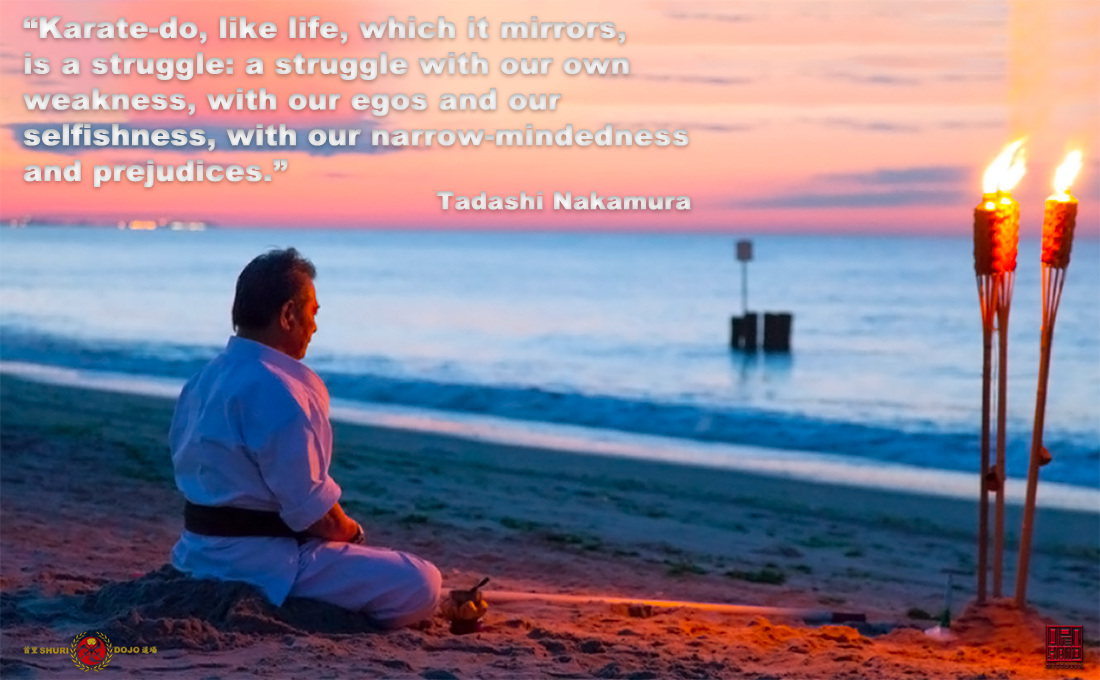
Karate, its birthplace on the small island of Okinawa, created from indigenous fighting systems with influences from Chinese Kempo.
.
“Karate” (空手), meaning “empty hand”, the name was changed from Chinese hand or Tang hand (唐手), in the early part of the 20th century – both of which are pronounced karate in Japanese.
.
“Karate-Do” (空手道) – “the way of the empty hand”. The names of many Japanese martial arts are suffixed; “Do”, e.g. “Kendo”, “Judo”, “Kyudo, “Jodo”, “Aikido” etc.
.
“Do” (道), “the way”, or “path”, is meant to convey the idea of a long journey, or undertaking, in a sense similar to a pilgrimage, a long-term commitment with philosophical implications. To follow the ‘way’ is a constant test of personal qualities, but can provide many rewards in terms of physical and mental well-being.
.
The martial arts are unique in that harmony of mind and body is actively promoted.
.
Irrespective of style, the traditional approach to karate is a discipline that goes far beyond the study of self-defense applications or competitive sport. It is a culture that carries with it the basis for improving all aspects of human nature. For the committed practitioner, karate is a pathway to positive growth and well-being.
.
When we understand that training is more than simply physical we may refer to it by the name, Karate-do, a pathway to self-knowledge. The underlying principles of traditional karate can be likened to those of a physical science. As with any science there are basic laws that are integral to its application, and the ultimate aim of training is to embed the correct mechanics of movement so deeply, that techniques are executed without conscious effort.
.
In traditional karate we recognize that to forge the body is also to forge the mind, and the practical and philosophical aim of traditional karate training is to bring the mind and the body together as one. Conditioning body movements to the correct standards of execution requires a great deal of physical effort and concentration of will; mastery does not come in a day, a month, or even a year.
.
Karate training demands that we overcome discouragement, discipline emotions in the face of fear, and analyze what it means to commit to this pathway.
.
Karate-do is the pathway of inner development which grows from the study of the science of karate. Students come to this practice for many diverse reasons and many have found deeper meaning than originally sought from physical training.
.
It is clear that Karate-do is much more than mere self-defense techniques, actually, such a definition is a far shot from the real essence of Karate as a philosophy, which strives to develop the inner qualities of a human being, and the search of perfection of your character, through strenuous and committed training in the ‘Do’ of the martial arts. 

.
“Karate-do, like life, which it mirrors, is a struggle: a struggle with our own weakness, with our egos and our selfishness, with our narrow-mindedness and prejudices.” – Tadashi Nakamura from the book Karate Technique Spirit
.
.
